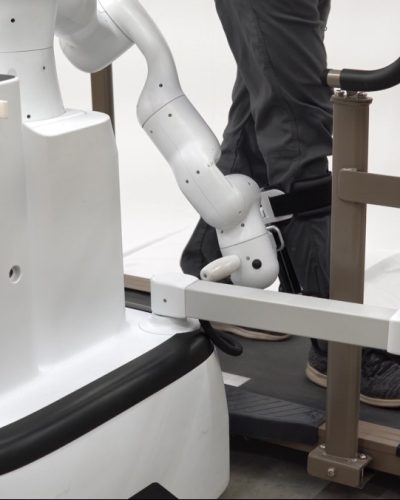Robot-assisted Physical Therapy: The Benefits of Assist-as-Needed Protocol
Robot-assisted physical therapy has gained popularity in recent years as a means to aid stroke patients and other populations in faster and more successful recoveries. Traditional physical therapy methods, as well as some robotic methods, may involve repetitive exercises and passive riding, such as the use of passive range of motion exercises for patients with paralysis. While these methods are beneficial in certain cases, they may not be as effective in promoting active engagement and voluntary effort during later stages of stroke rehabilitation. This is where the assist-as-needed protocol in robot-assisted physical therapy becomes critical, as it encourages voluntary effort and enables more efficient neuroplasticity of stroke patients.
What is the Assist-as-Needed Protocol?
The AAN protocol is a smart, adjustable assistance approach that aims to encourage voluntary effort during physical therapy. Unlike other robotic rehabilitation methods that provide continuous assistance, the AAN protocol adjusts the level of assistance based on the patient’s rehab exercise performance. By doing so, it encourages patients to put in more effort and engage their muscles more actively, leading to better outcomes in the long run. The AAN protocol also offers individualized support, ensuring that each patient receives the right level of assistance based on their abilities and needs.
How does the AAN Protocol Work?
The AAN protocol works by using advanced robotics to provide tailored assistance to patients. The robot measures the patient’s performance during rehab exercises and adjusts the level of assistance accordingly. For example, if a patient is struggling to perform a particular movement, the robot can provide more assistance to help them complete it. If the patient is performing well, the robot can reduce the assistance, allowing them to make voluntary efforts to complete the movement. This way, the patient is always challenged at the right level, leading to better engagement and motivation during therapy.
The Benefits of the AAN Protocol
The AAN protocol has been shown to have several benefits for patients undergoing physical therapy. First, it encourages voluntary effort, which is critical in provoking neuroplasticity in stroke patients more effectively. Voluntary effort involves patients’ active participation and engagement during therapy, leading to better long-term outcomes. Second, the AAN protocol offers individualized support, ensuring that each patient receives the right level of assistance based on their abilities and needs. This way, patients are more likely to make progress and improve their physical function. Finally, the AAN protocol can lead to better cost-effectiveness, as patients are more likely to complete their rehab exercises and require less follow-up care.
The Evidence Supporting the AAN Protocol
There is a growing body of evidence supporting the effectiveness of the AAN protocol in stroke patients and other populations. For example, a recent study published in the IEEE Transactions on Neural Systems and Rehabilitation Engineering found that stroke patients who underwent robot-assisted gait training using the AAN protocol showed significant improvements in their treadmill gait performance with over-ground walking transfer. Another article published in the Current Physical Medicine and Rehabilitation Reports reviewed various AAN protocols used in robotic rehabilitation for upper limbs, which led to better motor function recovery. Many other studies suggest that the AAN protocol can improve physical therapy outcomes and lead to better long-term outcomes for patients.
Conclusion
Robot-assisted physical therapy using the AAN protocol can offer numerous benefits for patients undergoing rehab. By encouraging voluntary effort and offering individualized support, the AAN protocol can help patients make progress and improve their physical function. Additionally, the AAN protocol can lead to better cost-effectiveness, reducing the need for follow-up care. Optimo incorporates cutting-edge AAN protocols in the upper/lower extremity and gait training modules. If you or a loved one is undergoing physical therapy, consider talking to your healthcare provider about using robotic therapy with AAN protocols for better outcomes.



